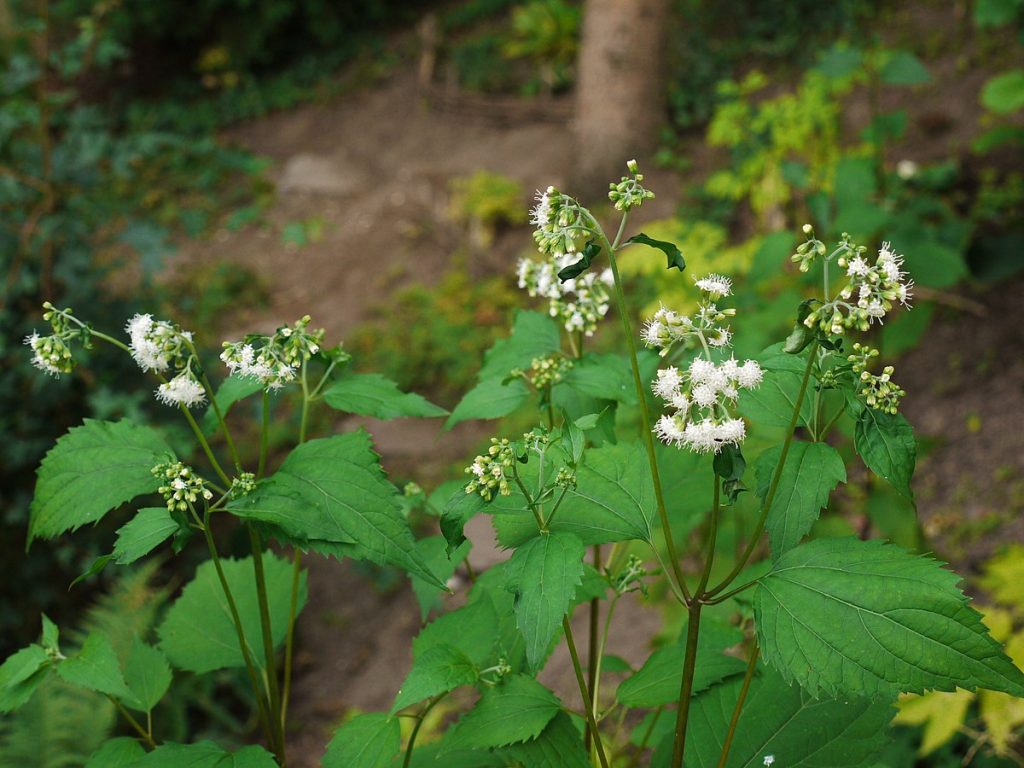
Also known as tall boneset and richweed, this herbaceous perennial is native to central and eastern North America where it grows in woods and thickets. It is a member of the aster family (Asteraceae) and related to Joe Pye weed. Slender branching stems carry the dark green nettle-like leaves that are five to seven inches long, sharply toothed and with slightly hairy veins on the underside. The fluffy bright white flower heads appear from late summer to frost in loose flat corymbs three to four inches wide and are especially valued because white flowers are rare in the garden at that time. In addition, the flowers are a late season food source for bees, butterflies, and moths. The cultivar ‘Chocolate’ has dark purple stems and leaves that fade slowly over the course of the summer and are green by the time the flowers appear. Plants spread by seed and rhizomes and are good in the garden as well as for cutting but do not do well where nights are warm. In addition, they are poisonous to cows and make their milk toxic to humans. The genus name, Ageratina, is the diminutive of the Greek word, ageratos, meaning not-growing old, and refers to the the fact that the flowers keep their color for a long time. The specific epithet, altissima, is the Latin word meaning highest or tallest and probably refers to the relative height of the plant.
Type: Herbaceous perennial
Bloom: Fluffy bright white flowerheads in loose flat clusters three to four inches wide from late summer to frost
Size: 3-5’ H x 4’ W
Light: Sun, part shade
Soil: Average, moist, well-drained
Hardiness: Zones 3-7
Care: Deadhead, cut down after flowering.
Pests and Diseases: Leaf minors, flea beetles
Propagation: Seed (but ‘Chocolate’ will not come true); division in early spring
Companion plants: Cone flower, Russian sage, Japanese anemone, Sedum ‘Autumn Joy’
Outstanding Selection: ‘Chocolate’ (dark foliage)
Photo Credit: Drahkrub Wikimedia Commons